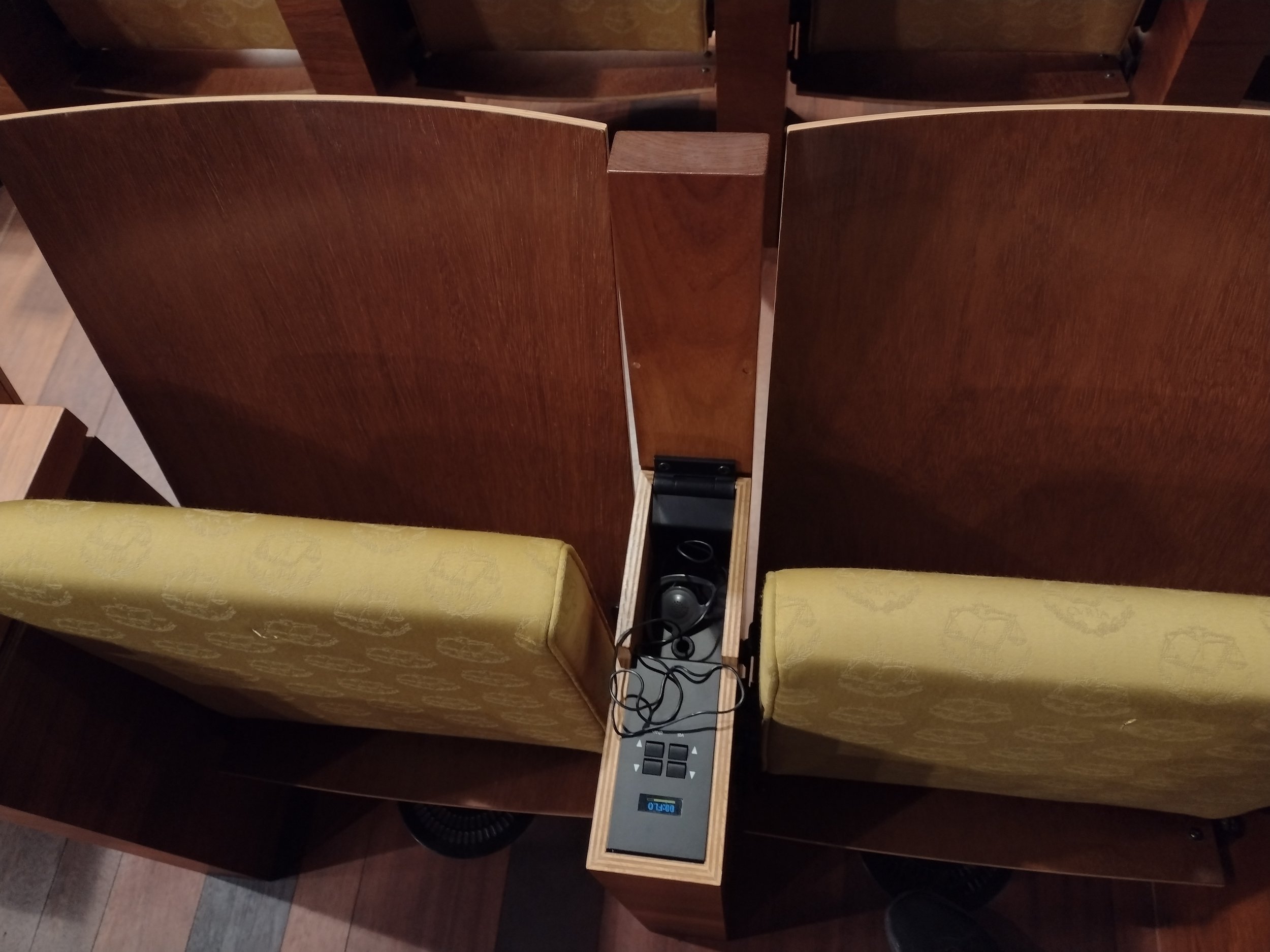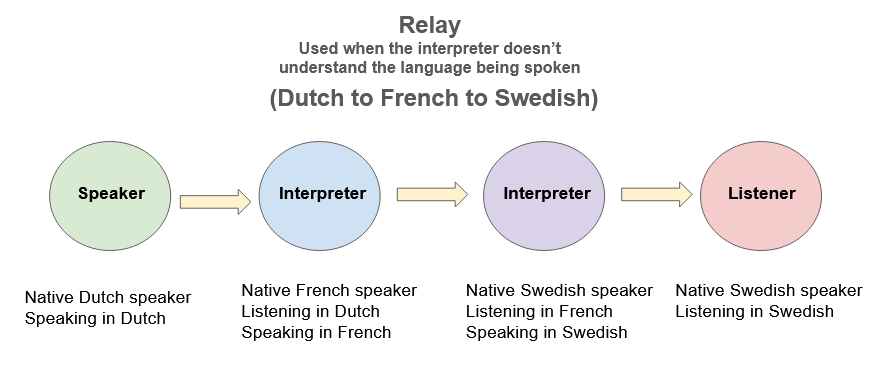Multilingualism in Action
Meet an Interpreter for the European Union Court of Justice
“My desire is to understand. You can’t be an interpreter unless you like to know things.”
This summer I had the opportunity to deepen my understanding of multilingualism in one of the best professional development experiences of my life. Each summer, the European Union sponsors American educators to spend a week in Brussels and Luxembourg, visiting EU institutions and strengthening EU-US relationships. The experience is facilitated by the University of Pittsburgh, and you can learn more about it (and apply yourself) at this link.
The EU’s European Court of Justice is located in Luxembourg
The European Union is home to tremendous linguistic diversity. So, in addition to eating as many fries and waffles as possible, I was especially interested in learning how the EU handles communication across its daunting language barriers.
During our group visit to the European Court of Justice in Luxembourg, I met Cecilia Åberg. Cecilia is a Swedish interpreter with almost 30 years experience. She has worked for 16 years as an interpreter for the European Parliament and for over a decade in the Court of Justice. Cecilia was kind enough to answer all of my questions.
How many languages are spoken in the European Union?
There are 24 official languages of the EU. In alphabetical order they are: Bulgarian, Croatian, Czech, Danish, Dutch, English, Estonian, Finnish, French, German, Greek, Hungarian, Irish, Italian, Latvian, Lithuanian, Maltese, Polish, Portuguese, Romanian, Slovak, Slovenian, Spanish and Swedish.
How does the EU manage communication in all these languages?
Cecilia Åberg, Swedish interpreter for the European Court of Justice in Luxembourg
According to EU official policy, all languages are equally valid and valuable. All EU content is made available in all 24 languages at the same time. (Read more about the EU’s language policy on their website, www.consilium.europa.eu)
Written documents are translated and released simultaneously.
Verbal communication is made accessible via “simultaneous interpretation”, which requires trained interpreters and specialized equipment.
Practically speaking, what does this look like?
When the EU began in 1993, there were 4 official languages: French, Italian, German, and Dutch. This created a total of 12 language combinations, as each language can be translated into each of the others.
Today, with 24 official languages, there are 552 language combinations! Thus, the EU employs a huge number of translators and interpreters.
There are over 900 translation services staffers for the EU Council (this in addition to the Parliament, Court of Justice, and other EU institutions’ translation staff). Translation for one meeting costs in the neighborhood of €3500! This fact alone demonstrates the high priority the EU places on making content available to all its citizens.
What is the difference between translation and interpretation?
Translation refers to written documents. All EU policy and official documents are released in all 24 languages at the same time. Translators generally translate into their mother tongue.
Interpretation refers to spoken language. Interpretation is NOT word-for-word translation; it is meant to give the listener a clear understanding of the ideas being verbally communicated.
There are two main types of conference interpretation:
Consecutive interpretation: the interpreter takes notes and then repeats the information after the speaker concludes. This is usually reserved for short speeches such as introductions, greetings, thank you speeches and the like.
Simultaneous interpretation; interpretation occurs while the speaker is speaking. This accounts for the bulk of interpretation that takes place in the EU, and requires electronic equipment.
Each EU meeting room we visited is equipped with earpieces and ringed with interpretation booths.
There are earpieces in the armrest of every seat in the gallery of the European Court of Justice. Spectators have access to simultaneous interpretation in as many as 24 EU languages, depending on the language combination used in a given meeting.
Interpretation booths circle the walls of each meeting room in the European Union. Here, two stories of glass-enclosed booths surround the meeting room of the European Council to provide for simultaneous interpretation.
How does simultaneous interpretation work?
The interpreter (almost) always speaks in his/her mother tongue (L1).
The interpreter listens to the foreign language (L2) speaker in an earpiece and verbally interprets into a microphone on their language channel.
This L2 to L1 interpretation is called “direct” interpretation.
For example: if a speaker on the floor is using French, a Swedish native speaker will relay that information in Swedish on the Swedish channel.
Interpreters must pass a test for each language they interpret directly from L2 into L1.
Before each meeting, a ‘team sheet’ is published showing which language combinations are available in each booth.
If the speaker on the floor is using Swedish, no interpretation takes place on the Swedish channel. (L1 to L1 is not needed)
What if no one in your booth speaks the necessary language combination? (i.e., no one understands L2?)
For more widely spoken languages such as English and French, there is almost always a speaker available with the necessary language combination. For booths where no one understands the L2 on the floor (where, for example, Dutch is being spoken), the interpreters will switch to a L2 channel they understand such as French. The interpreter then listens to the French interpretation of the Dutch speaker, and relays it from French into Swedish.
This process of L3 to L2 to L1 is known as “relay”. Relay is used widely in the European Union to cover all possible language combinations.
The impact of relay is noticeable when someone tells a joke, and there are waves of laughter. In the example above, first people who understand Dutch will laugh at a joke, then the French speakers will laugh, and finally the Swedish speakers laugh as the joke is interpreted into each language in turn.
In rare cases, ‘double relay’ is used to interpret L4 to L3 to L2 to L1.
Retour
For less widely spoken languages (such as Estonian), the Estonian interpreters may switch their microphone to a widely spoken L2 channel (such as French). The Estonian speakers will then interpret into French. This L1 into L2 interpretation is called “retour”.
What does an Interpreter have to be aware of?
“In your second language you say what you are able to say, not necessarily what you want to say.”
You have to understand everything
You have to make it sound natural in your mother tongue
The interpreter never adds anything to what the speaker says, or expresses an opinion.
You have to stay close to the speaker and finish speaking at the same time they do
You have to match the speaker’s tone and intention. For example, if the speaker says sarcastically, “This is a wonderful proposal” you must communicate the sarcasm - otherwise, your listener could come away with a completely opposite idea of what’s been communicated.
You must clarify who is speaking, which can be challenging if there’s a rapid fire question and answer session.
You have to stay focused and not let your mind wander. Sometimes a fast, difficult speech is easier to translate than a long detailed discussion of policy.
Interpretation is mentally taxing; typically an interpreter will work for about 30 minutes before trading off to a colleague.
Some tips that help Ms. Åberg succeed in her challenging job:
Model of the European Court of Justice building
Substitute abbreviations for full words. If the speaker says “European Union” you can say “EU” to gain a bit of time.
Sometimes at the end, the speaker repeats themself or thanks the audience; the interpreter can summarize these ideas.
Sometimes, an interpreter can generalize the speaker’s words and still communicate the main ideas. For example, perhaps the speaker is describing a rare bird, and the interpreter doesn’t immediately know the word; the interpreter can just say ‘bird’.
The interpreter then be extra careful to include all details mentioned by the speaker, such as “this bird eats a lot of shrimp”.
It helps to be a well-informed, well rounded person who is interested in ideas. You encounter all kinds of speech during interpretation; statistics, quotes from the Bible, recipes my grandma used to make (and my grandma was Greek…), sports metaphors, medical facts...
Interpreters also receive documents to study ahead of meetings. In the court of justice, for example, interpreters receive court documents before the date of the hearing; this gives them time to prepare for the technicalities that will be discussed in the hearing and to learn or review any needed terminology.
Sometimes freelance interpreters are used, particularly when they have a needed language combination. Freelancers also receive time in advance of events to review court documents and brush up on needed language.
Grand Staircase and Chandelier at the European Court of Justice
What speaking proficiency level do you need to interpret?
This answer surprised me: technically, you don’t need ANY second language speaking proficiency to interpret! Interpreters almost always interpret into their mother tongue; therefore, you don’t have to speak the language you are interpreting from - only understand it! On a practical level, of course, interpreters are quite proficient in several languages. After almost 30 years interpreting in the European Union, Ms. Åberg can immediately recognize all 24 official EU languages, and even knows common phrases such as “Thank you, Mr. President…” in each.
To quote Ms. Åberg, the bottom line is, “You have to understand EVERYTHING and you have to make it sound Swedish.”
The EU’s commitment to language accessibility and translation services is an impressive reminder of the importance of our mission as language teachers. By sharing language with our students we help make the unknown accessible and familiar.
To learn more about the EU’s language policy, visit https://www.consilium.europa.eu/en/about-site/language-policy/
And visit https://www.ucis.pitt.edu/esc/outreach/educators/professional-development/brussels to learn more about the Brussels-Lux study tour for educators (which is open to all teachers, not just French!)
What impressed you most about the job of interpreter? Share in the comments











